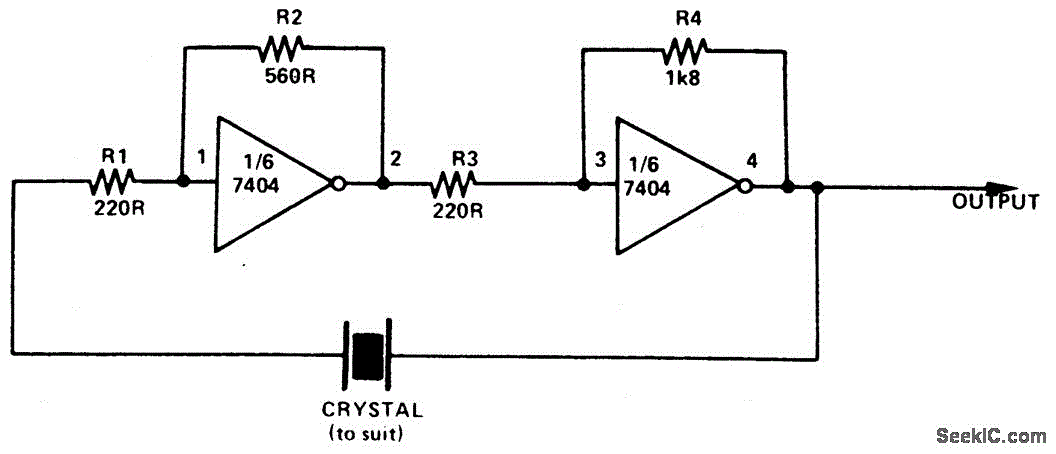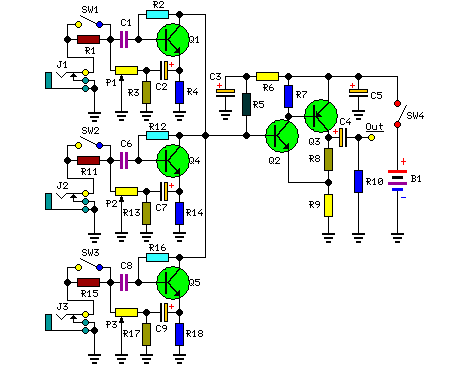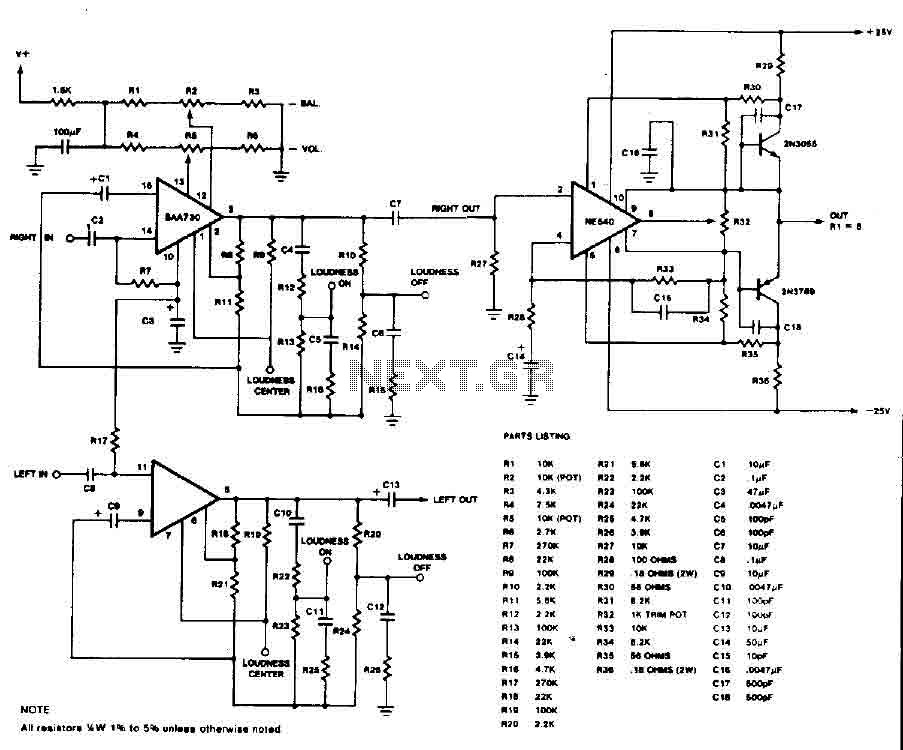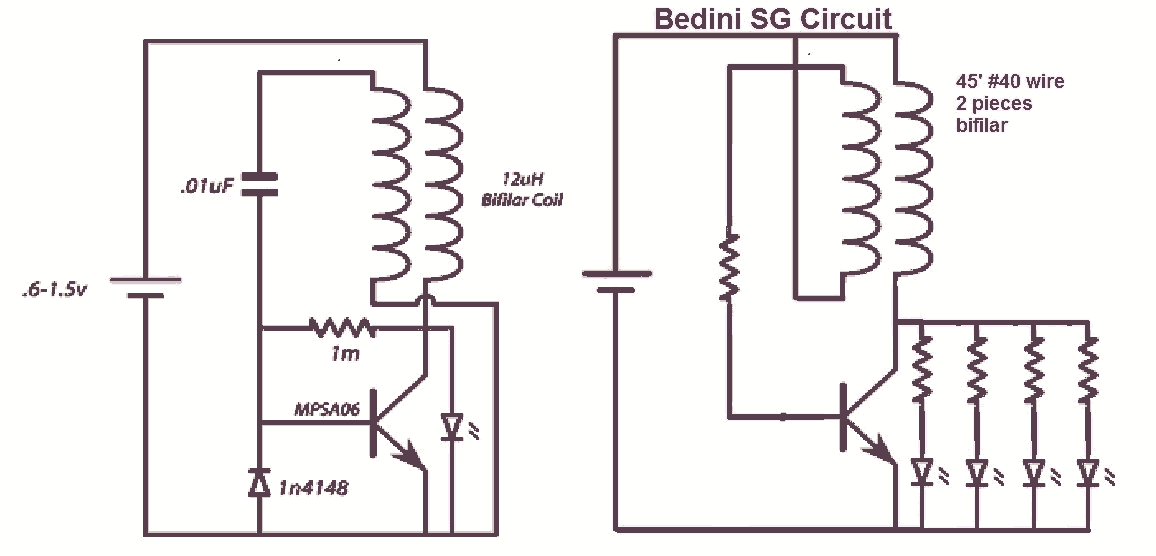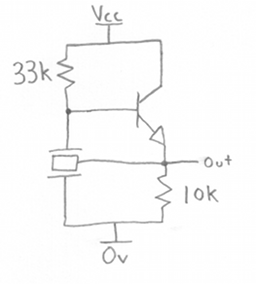
Adjustable sine-wave audio oscillator
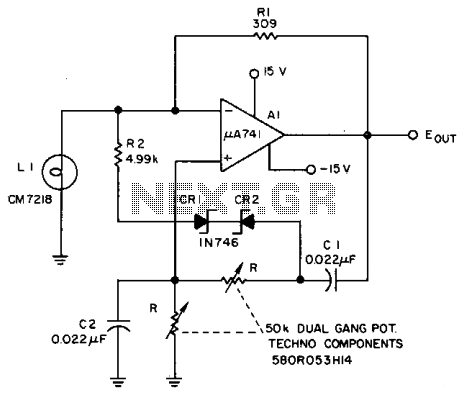
The Lamp LI stabilizes the loop gain at higher frequencies, while the limiting action of R2, CRI, and CR2 prevents clipping at low frequencies and increases the frequency adjustment range from approximately 3:1 to over 10:1. Additionally, waveform purity at low frequencies for a Wien bridge oscillator is enhanced by diode limiting.
The described circuit employs a Lamp LI, which serves as a crucial component for stabilizing the loop gain in high-frequency applications. This stabilization is vital for maintaining consistent performance in oscillators and amplifiers, where variations in gain can lead to distortion and instability. The Lamp LI operates by providing a variable resistance that changes with the current, effectively modulating the gain based on the circuit's operational conditions.
In conjunction with the Lamp LI, resistors R2, CRI, and CR2 play a significant role in limiting the output signal to prevent clipping during low-frequency operations. Clipping occurs when the output signal exceeds the maximum amplitude that can be accurately represented, resulting in waveform distortion. By incorporating these components, the circuit can maintain linearity and fidelity in the output signal, particularly at lower frequencies where such issues are more pronounced.
The frequency adjustment range is notably improved from a ratio of approximately 3:1 to greater than 10:1. This enhancement allows for a broader spectrum of frequency outputs, making the circuit more versatile for various applications, including audio signal processing and precise frequency synthesis.
Furthermore, the use of diode limiting contributes to the overall waveform purity of the Wien bridge oscillator at low frequencies. Diode limiting acts as a protective mechanism that ensures the output signal remains within acceptable bounds, thereby preserving the integrity of the waveform. This feature is particularly important in applications where signal clarity and accuracy are paramount, such as in audio equipment and precision measurement devices.
In summary, the combination of the Lamp LI with the limiting components R2, CRI, and CR2, along with diode limiting, creates a robust circuit capable of delivering high-performance characteristics across a wide frequency range while maintaining waveform integrity. Lamp LI stabilizes the loop gain at higher frequencies while the limiting action of R2, CRI, and CR2 prevents clipping at low frequencies and increases the frequency adjustment range from about 3:1 to greater than 10:1. Waveform purity at low frequencies for a Wien bridge oscillator is enhanced by diode limiting. 🔗 External reference
The described circuit employs a Lamp LI, which serves as a crucial component for stabilizing the loop gain in high-frequency applications. This stabilization is vital for maintaining consistent performance in oscillators and amplifiers, where variations in gain can lead to distortion and instability. The Lamp LI operates by providing a variable resistance that changes with the current, effectively modulating the gain based on the circuit's operational conditions.
In conjunction with the Lamp LI, resistors R2, CRI, and CR2 play a significant role in limiting the output signal to prevent clipping during low-frequency operations. Clipping occurs when the output signal exceeds the maximum amplitude that can be accurately represented, resulting in waveform distortion. By incorporating these components, the circuit can maintain linearity and fidelity in the output signal, particularly at lower frequencies where such issues are more pronounced.
The frequency adjustment range is notably improved from a ratio of approximately 3:1 to greater than 10:1. This enhancement allows for a broader spectrum of frequency outputs, making the circuit more versatile for various applications, including audio signal processing and precise frequency synthesis.
Furthermore, the use of diode limiting contributes to the overall waveform purity of the Wien bridge oscillator at low frequencies. Diode limiting acts as a protective mechanism that ensures the output signal remains within acceptable bounds, thereby preserving the integrity of the waveform. This feature is particularly important in applications where signal clarity and accuracy are paramount, such as in audio equipment and precision measurement devices.
In summary, the combination of the Lamp LI with the limiting components R2, CRI, and CR2, along with diode limiting, creates a robust circuit capable of delivering high-performance characteristics across a wide frequency range while maintaining waveform integrity. Lamp LI stabilizes the loop gain at higher frequencies while the limiting action of R2, CRI, and CR2 prevents clipping at low frequencies and increases the frequency adjustment range from about 3:1 to greater than 10:1. Waveform purity at low frequencies for a Wien bridge oscillator is enhanced by diode limiting. 🔗 External reference
